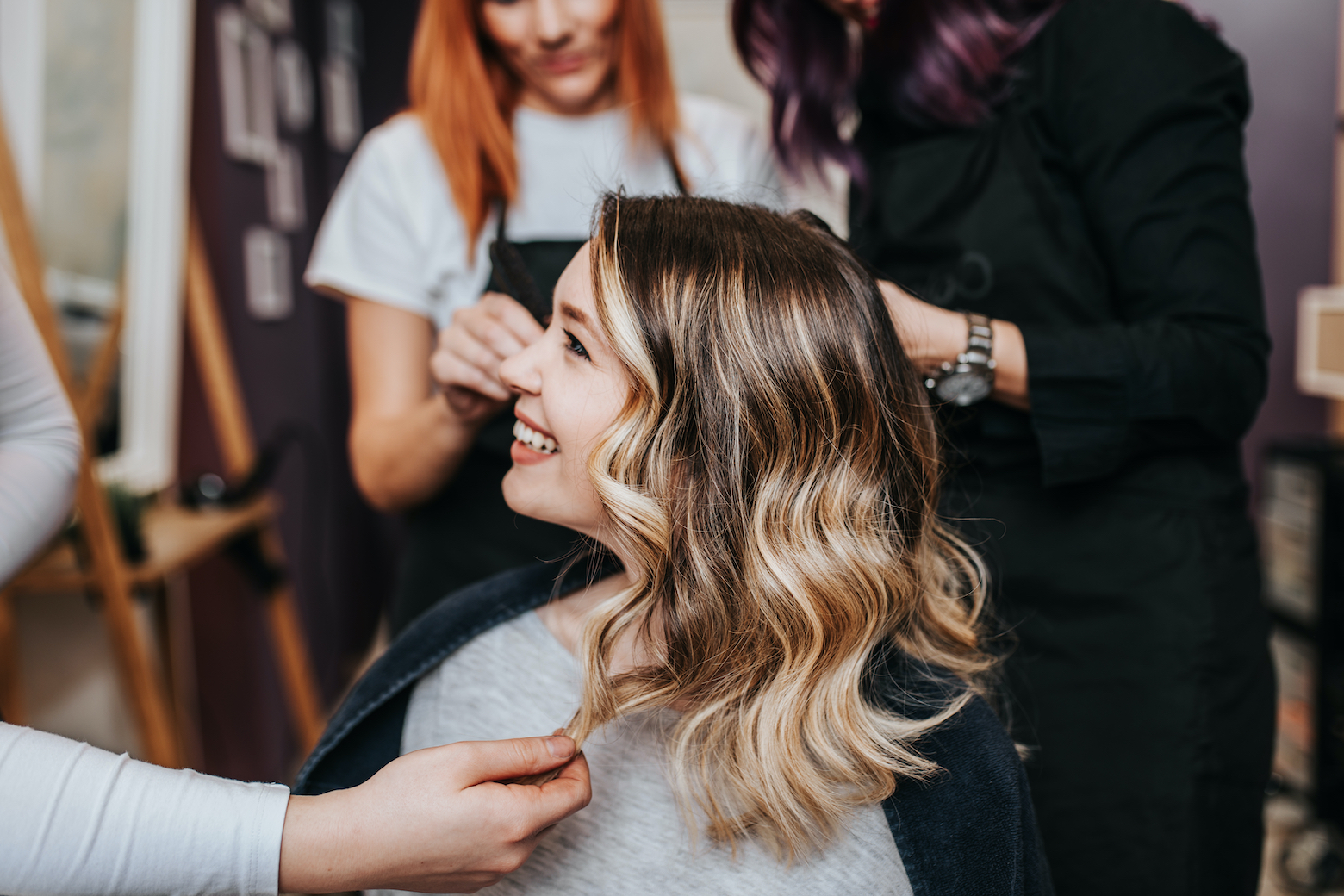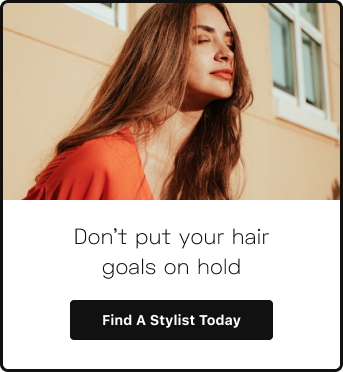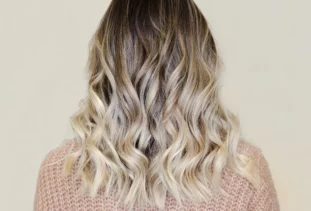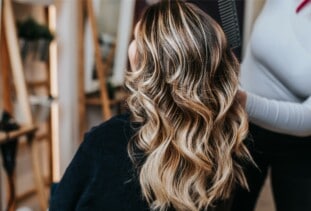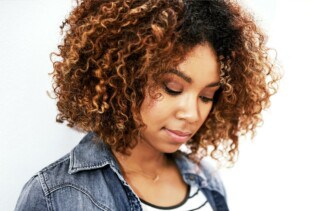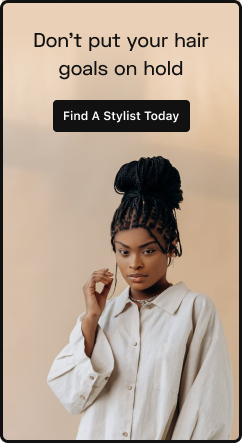When comparing balayage vs. highlights, you’ll see that both can add dimension to your natural tone, bring out specific facial features, or just offer a fun way to change your look. Stylists employ a range of highlighting techniques, including foil, ombré, sombré, lowlights, babylights, and — one style that has reigned supreme in recent years — balayage.
Balayage vs. highlights: Which one should you choose? We’ll talk about the differences between classic highlights, which involve the foil technique, and balayage, which uses a freehand method. Then, we’ll explain various highlight techniques, discuss the pros and cons of balayage and highlights, and help you choose which one works best for you.
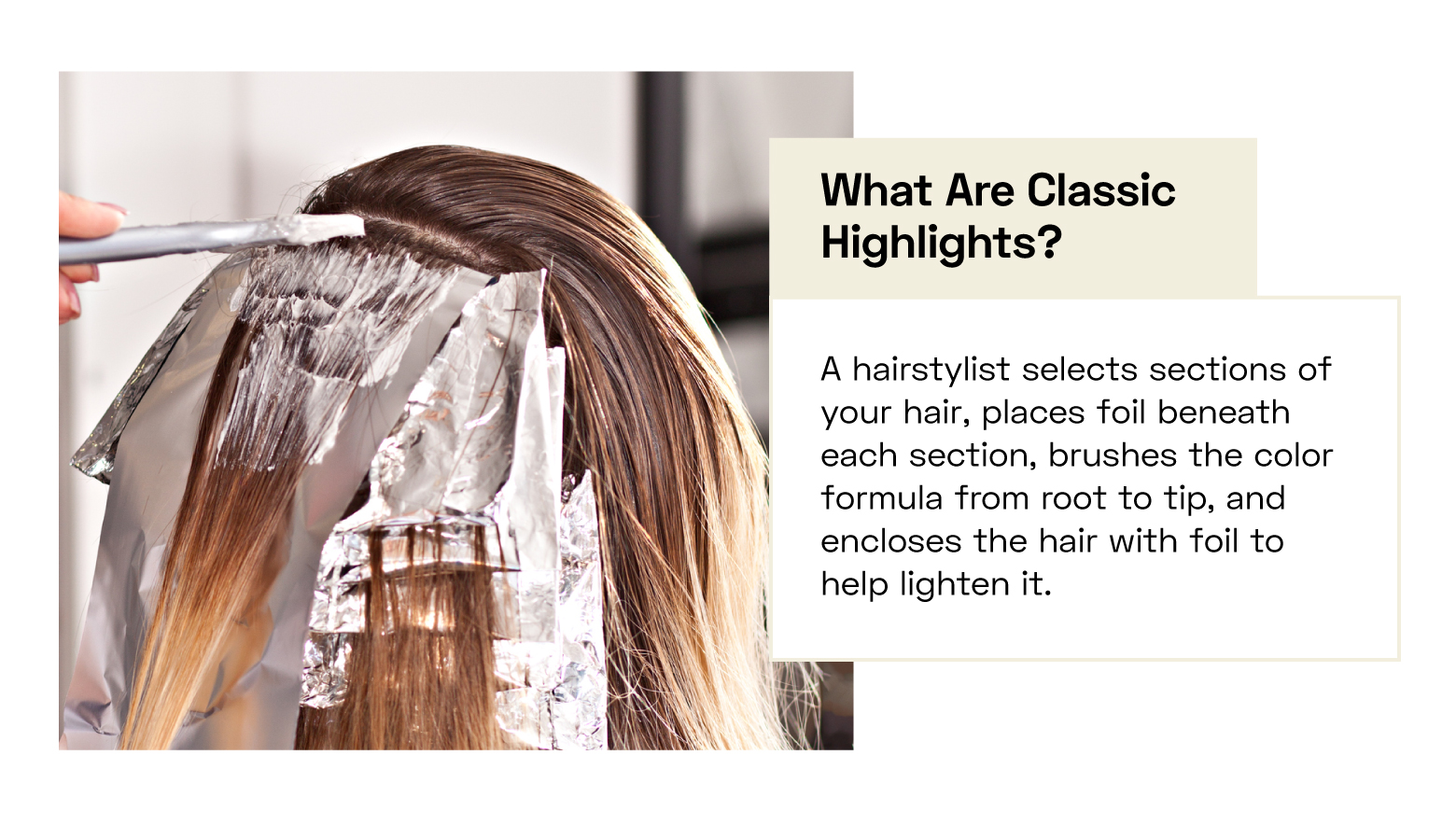
What Are Highlights?
Hair highlighting can be performed through various techniques, but stylists traditionally lighten a client’s hair with a bleach-based color formula. The most well-known highlighting technique, classic highlights, uses the structured placement of foils to section off pieces of hair and color strands from root to ends. Balayage, on the other hand, employs a less structured approach and instead applies highlights more naturally, based on the client’s specific hair needs, without using a root-to-ends approach. We provide a breakdown of each highlighting technique below:
- Lowlights: The opposite of highlights, lowlights add undertones of darker colors to create dimension in your hair. Stylists will often choose a formula two to three shades darker than your base color, and often in a warmer tone.
- Babylights: Babylights take extremely thin sections of hair to create soft, subtle highlights. This technique achieves a gentle sun-kissed glow rather than a bold chunky look.
- Ombré: A bolder, edgier look, ombré refers to a two-tone color that starts dark at the top and becomes lighter near the ends of the hair. You may even see a stark line of demarcation between the two different colors.
- Sombré: Sombré opts for a gentler transition and less contrasting colors, resulting in a more subtle version of ombré.
- Face-framing: Also known as money-piece highlights, the popular face-framing highlight technique brightens your features by adding sun-kissed strands around your face. Stylists can accomplish this look using foil highlights, a freehand method, or a combination of both: foilayage.
- Balayage: Thanks to freehand hand-painted highlights, balayage gives clients a more natural, subtle look. Sometimes stylists combine balayage and classic highlights, or foilayage, which creates a mix of natural and brighter hair that neither balayage nor traditional foil highlights could achieve alone.
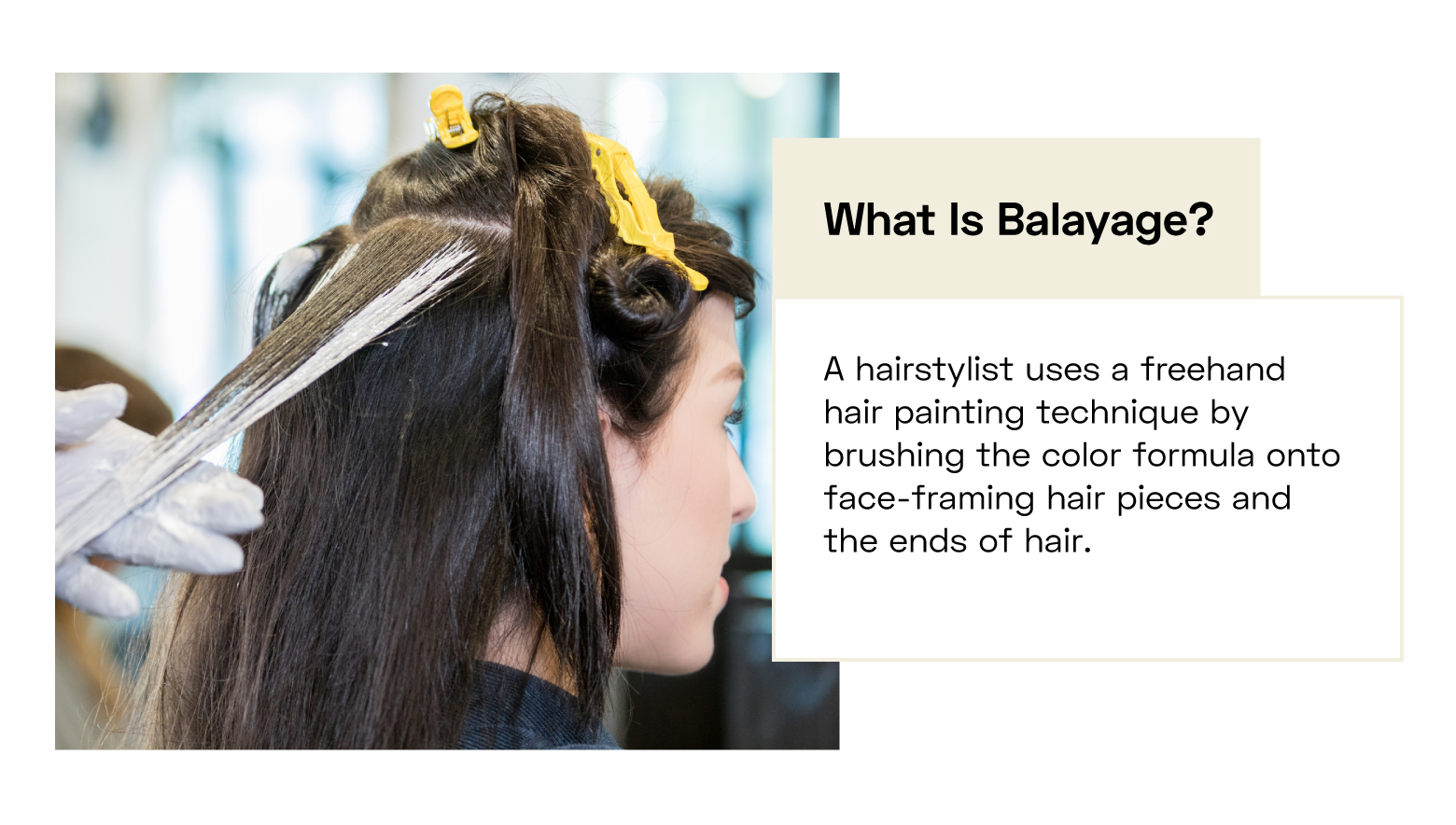
What Is Balayage?
The balayage technique produces a soft, beach-kissed look by bleaching the hair in subtle, hand-painted strokes. This approach does not involve foils and root-to-ends coloring. Instead, the hairstylist strategically brushes (or “sweeps,” as the french word balayage suggests) the lighter color onto strands of hair, starting around the midshaft, while allowing large amounts of your darker base to show through. This helps balayage highlights give your hair tons of dimension.
Because it involves a freehand technique, balayage requires a skilled colorist who understands your needs to give you the customized look you want. If you want to avoid needing regular touch-ups, you can opt for a partial, or mini, balayage, which highlights only the top layer of your hair and around your face.
Balayage vs. Highlights
Balayage involves hand-painting sections of hair, while classic highlighting involves using foils to color strands from roots to ends. We break down the two techniques for you here to help you decide which style to choose the next time you head to the salon.
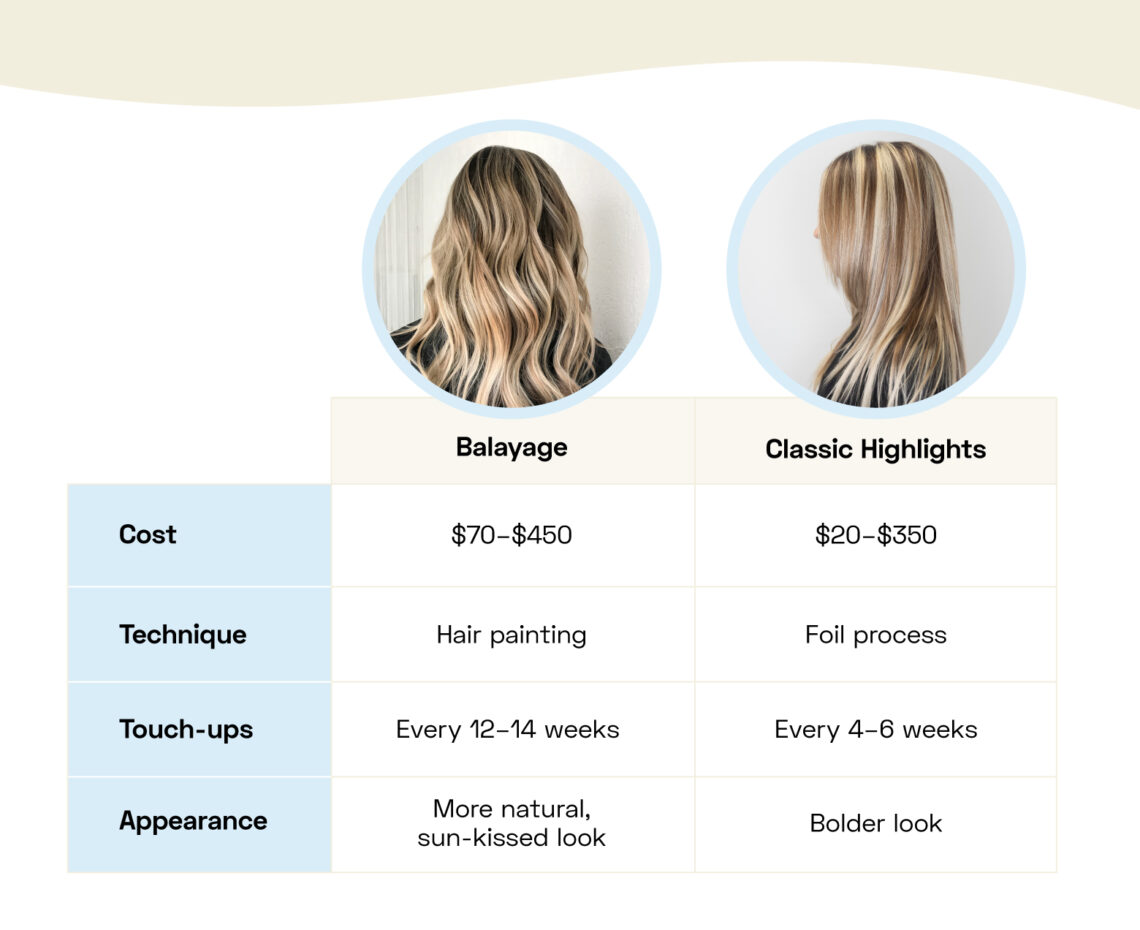
Balayage Has a Natural Look and Highlights Have a Structured Look
Using a freehand hair-coloring method that often focuses on framing the face and highlighting the ends, balayage results in a soft, subtle look. Classic highlights, by contrast, use the foil method in which the stylist separates sections (or weaves) of hair, places aluminum foil beneath the selected portion, and applies the color. This creates distinct, structured sections of light hair throughout the head. While you can choose either full or partial traditional highlights, neither will provide you with the natural look of balayage.
Balayage Requires Fewer Salon Visits
The end result of balayage is a subtle gradient that requires less maintenance than classic highlights. Because traditional highlights begin at the roots and go down to the ends, any regrowth is obvious. For this reason, you may need to go to the salon every four to six weeks to get a touch-up, compared to every 12 to 14 weeks for the low-maintenance balayage.
Highlights Cost Less Per Session
Traditional highlights tend to cost less per salon visit than balayage. Typically, highlight costs range from $20 to $150 (depending on your hair length and whether you choose partial or full highlights), babylights can run you $55 to $350, and balayage costs range from $70 to $450+. Besides hair length, pricing also varies by location and stylist experience or skill level. Cost per visit doesn’t tell the whole story, however. Remember that since you can visit the salon much less frequently with a balayage, you’ll likely save money on touch-up costs and spend less over the course of a year.
Balayage is More Customizable
Stylists apply balayage highlights using a freehand painting technique, leaving room for a customized look for each individual client. Colorists all have their own style, and the application may differ by stylist — and even by season. You may opt for brighter blonde face-framing tones in summer and coppery colors in winter. While stylists can customize your color even with traditional highlights, the structured foil method makes it harder to achieve the freer, more personalized highlight placement of balayage.
Highlights Make a Bolder Statement
Because balayage creates a gradual, more natural color, it won’t produce a huge lightening effect in just one session. Traditional foil highlights, on the other hand, can give you maximum color lift at your first appointment. If you’re looking for a bold, immediate lightening treatment, you may consider classic highlights. If you are new to highlighting or want a more subtle look, balayage can help you achieve a sun-kissed effect, a more youthful look by casually covering up grays, and increased depth and dimension on any hair type. The less obvious highlights mean you won’t have to get your hair touched up as often either.
Which One Should I Choose: Balayage or Highlights?
Whether you choose balayage or highlights depends on the look you want and the time and money you have to achieve it.
Choose balayage if:
- You want a more natural, subtle, sun-kissed look with fewer salon visits.
- You want a more customized look.
- You are willing to spend more money in one salon session.
Choose traditional highlighting if:
- You want a more structured, all-over hair color look from root to ends.
- You don’t mind visiting the salon every four to six weeks for touch-ups.
- You want the maximum color lift after just one session.
Tips For Maintaining Highlighted Hair
Since bleaching and coloring your hair can damage it and make it more prone to breakage, post-treatment hair care can make all the difference. The right products can also make your new color last longer. The following tips can help you keep up with maintenance on your highlighted hair:
- Use purple-toned shampoo. Purple shampoo has violet pigments to neutralize not-so-pretty yellow and brassy tones. This can help you keep your color on point.
- Deep condition your hair. Hair color techniques involve chemical processing, which tends to dry out the hair, making moisturizing products essential. You can use anything from occasional deep-conditioning treatments to everyday hydrating shampoos and conditioners.
- Wash your hair less frequently. Washing your hair too often can cause your color to fade fast. Try to suds your locks only when they’re actually dirty: two to four days if you have finer hair and up to five to ten days if you have thicker hair.
- Reduce heat on your hair. Heat can dry your hair and diminish your color. So turn the heat down whenever you can. Lower your shower temperature, let your hair air-dry when possible, and avoid using hot irons too often.
To book your next balayage or highlighting appointment, visit StyleSeat to find a stylist near you.
